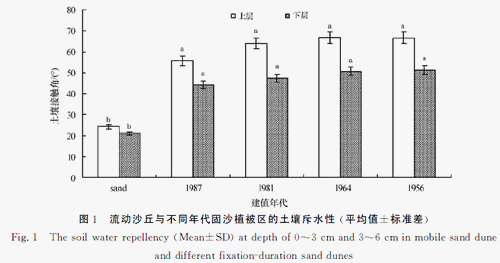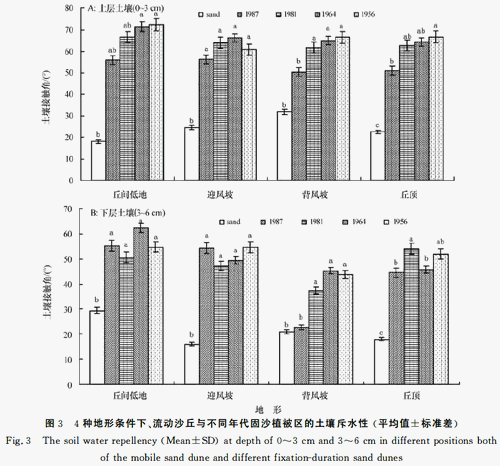Characteristics of Soil Water Repellency in Stabilized Sand Dunes in the Tengger Desert
Updatetime:2013-04-18From:
【Enlarge】【Reduce】
Soil water repellency (SWR) is one of the important physical properties of soils, which has significant effects on soil hydrological process and geomorphological process. In this study, the Capillary Rise Method was used to measure the SWR in the afforestation area in the Shapotou region, southeast of the Tengger Desert, China. Variations of soil water repellency in different micro landforms, different soil depths and different particle sizes were analyzed. Results indicate that the soil SWR is markedly changed by vegetation restoration, and it increases with the dune stabilization duration. In the same vegetation area, the SWR in inter-dune depression and windward slope is greater than that in crest and leeward slope, but no significant difference is found. The SWR of 0~3 cm topsoil is significantly greater than that in the soil layer of 3~6 cm. The soil SWR decreases with the increase of grain size, and the differences of SWR between different sieved soil fractions are found to be significant. There are significantly positive correlations between the SWR and the content of soil grain size at 0~0.05 mm, 0.05~0.01 mm and 0.01~0.15 mm, and a significantly negative correlation between the SWR and the content of soil grain size exceeding 0.15 mm. The increase of SWR at afforestation areas may depend on atmospheric dust on the stabilized dune surface and the formation of biological soil crusts, especially the formation of algal crust and lichen crust. Enhanced SWR will affect the effective water use of plants in the sand dunes.
Download from the attachment







